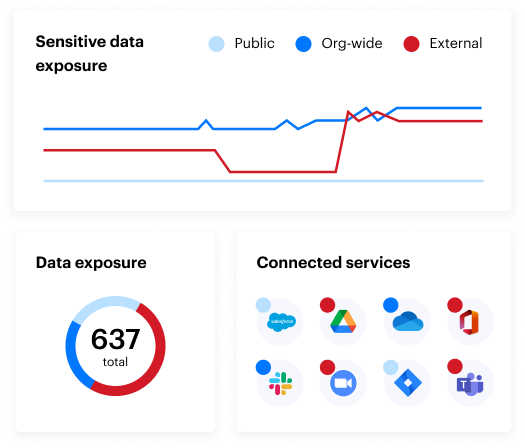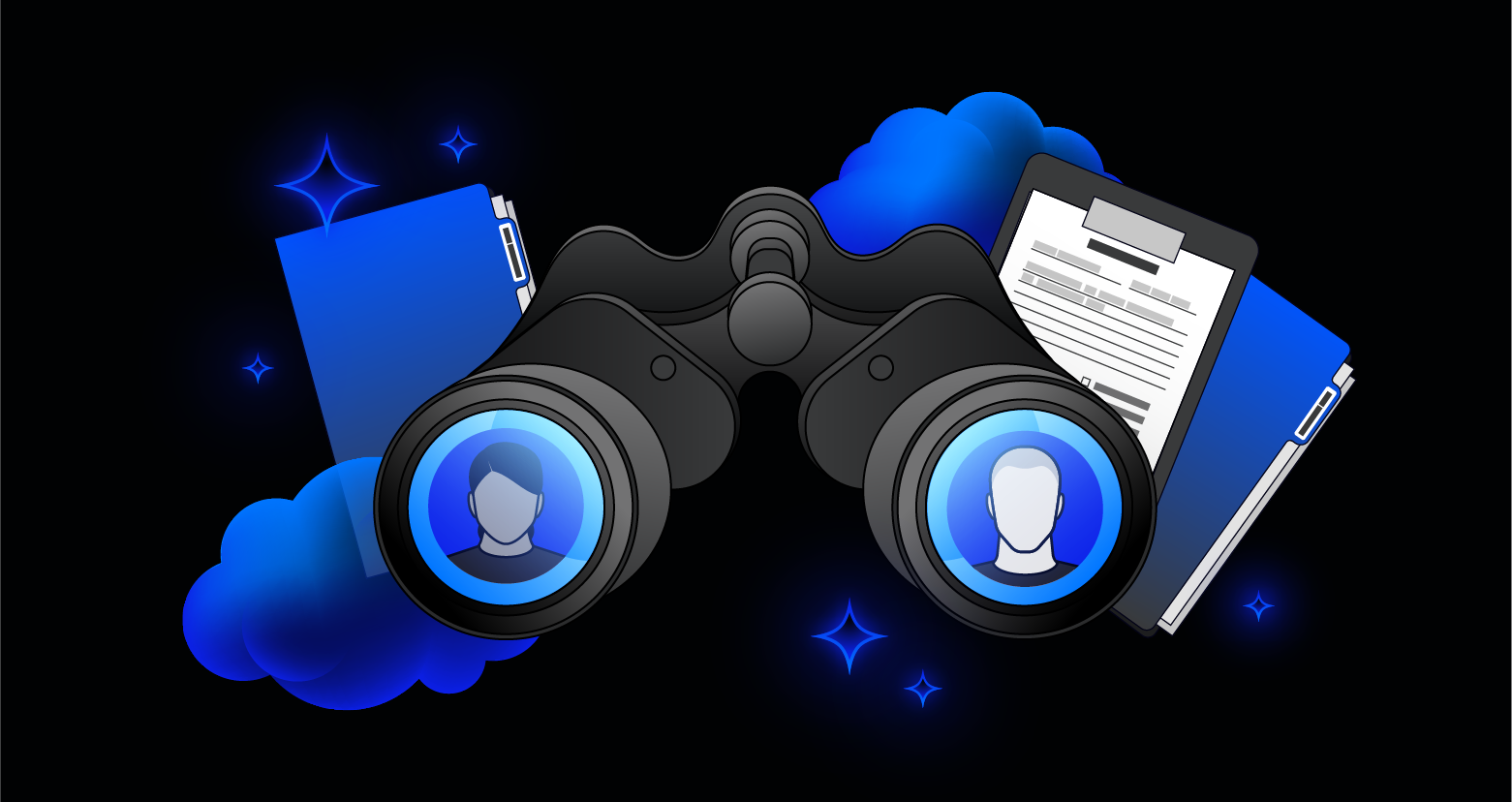From writing emails to analyzing financials and coding, AI has quickly become integral to the way we work. At the same time, AI tools and agents reveal the cracks in an organization’s data security. In these AI-enabled organizations, enforcing the principle of least privilege (PoLP) is more important than ever.
AI shines a spotlight on excessive access that might have otherwise gone unnoticed. AI tools and agents, like ChatGPT Enterprise, Microsoft 365 Copilot, and Salesforce Agentforce, operate from the same permissions as the user invoking them. When over-permissioned or compromised users have access to AI tools and agents, the risk of exposure and data breach increases exponentially. With 88% of organizations harboring ghost users and tens of thousands of stale permissions as well, the risk surface is already out of control.
In this blog, we’ll explore why enforcing least privilege is essential in the age of AI, how over-permissioned data creates risk, and how Varonis helps organizations stay secure while embracing AI innovation.
Throwing fuel on the data exposure problem
Over the years, data environments have become more sprawling with the move to multi-cloud environments, the emergence of cloud data warehouses and data lakes, and our growing reliance on SaaS apps. Now, sensitive data can live everywhere.
In addition, in our drive to be more collaborative, files and folders are shared with “everyone” or “all employees,” and temporary access lingers on too long. All of this creates the risk of exposure and data breach.
Now, AI is adding fuel to the fire. Suddenly, copilots and agents can retrieve and act on data that was never meant to be broadly accessible.
AI tools don’t stop to ask, “Should I have access to this data?” If a file is accessible, it’s usable. That means if your AI assistant can see sensitive HR records, financial forecasts, or M&A documents, it will summarize, share, and even leak that information without hesitation.
While over-permissioned and exposed data has always been a risk, AI makes those cracks in your data security even easier to exploit.
In our recent State of Data Security Report, we found that having numerous risks creates greater risk for exposure and breach when AI is implemented in the organization. We found that 99% of organizations have sensitive data exposed to AI, stemming from numerous risks, including:
- Stale users. Nearly 88% of organizations have accounts that haven’t been used in over 90 days, leaving sensitive data exposed to dormant identities.
- Over-permissioned cloud roles. The average AWS environment contains thousands of overly permissive policies, making it difficult to enforce least privilege at scale.
- High-risk OAuth apps. One in four OAuth apps are high-risk and unverified, and over half of employees use them—often without IT oversight.
- Public links. 92% of organizations allow users to create public sharing links, which are frequently used to expose ungoverned and confidential information.
Why least privilege matters more than ever
The principle of least privilege is simple: users and systems should only have access to the data they need to do their jobs—nothing more.
In the AI era, least privilege isn’t just a best practice—it’s a necessity. Without it, AI becomes a supercharged insider threat, capable of exposing terabytes of sensitive data in seconds.
Least privilege helps you:
- Prevent AI from accessing sensitive data it shouldn’t see.
- Reduce the blast radius of a compromised identity or prompt injection.
- Comply with data protection regulations like GDPR, HIPAA, and the EU AI Act.

Real-world risks: What happens without least privilege
Let’s look at a few scenarios highlighting how easy a data breach can happen when AI is involved.
- A sales rep asks Microsoft365 Copilot to “summarize our Q4 financials.” Copilot pulls in a spreadsheet from a finance folder that was accidentally shared with “everyone.” The rep forwards the summary to a prospect. Now, you’ve got a data breach.
- A marketer is using ChatGPT Enterprise to write a proposal. They upload an existing customer proposal to help create the template and fill in the details. The proposal looks good at a glance, and, under the pressure of a deadline, they send. They didn’t notice that customer information from the existing contract was copied directly into the new one – exposing sensitive customer data in the process.
- An AI agent trained on over-permissioned data starts generating responses based on outdated pricing, leading to a poor customer experience, reputational damage, and potential legal ramifications.
These aren’t hypotheticals—situations like this occur every day.
How Varonis helps enforce least privilege
Many organizations struggle with enforcing PoLP. Varonis leading Data Security Platform helps organizations embrace AI securely by enforcing least privilege and continuously monitoring how sensitive data is accessed and used.
Discover and classify sensitive data
Varonis can continuously discover and classify sensitive data across your entire data environment, PII, PHI, financials, IP, and more.
Automatically enforce least privilege
Our platform pinpoints excessive access and automatically remediates it—removing global access groups, revoking stale permissions, and locking down sensitive data.
Monitor AI activity in real time
Varonis provides real-time prompt monitoring for tools like Microsoft 365 Copilot and ChatGPT Enterprise. We analyze prompts and responses for sensitive data exposure, policy violations, and anomalous behavior.
Behavioral Analytics for AI Risk
Our user and entity behavior analytics (UEBA) detects unusual AI usage—like an executive accessing HR data from an unfamiliar location—and alerts your team before damage is done.
Always-on AI risk defense
With Varonis AI Shield, you get continuous protection against AI-driven data breaches—without slowing down innovation.
Organizations that fail to lock down their data are handing the keys to copilots, agents, and LLMs that don’t understand context or compliance and putting sensitive data at risk.
Varonis helps you embrace AI securely—by enforcing least privilege, monitoring AI activity, and protecting your most valuable data.
Principle of Least Privilege (PoLP) and AI Security: FAQs
What is the Principle of Least Privilege (PoLP)?
The Principle of Least Privilege (PoLP) is a security concept that restricts user and system access to only the data and resources necessary for their role. It helps reduce the attack surface and limits the damage of compromised accounts.
Why is PoLP important for AI security?
AI tools like Microsoft Copilot or Salesforce Agentforce operate based on granted permissions. If users or services have excessive access, AI tools can unintentionally expose sensitive data. PoLP ensures AI agents only access what's necessary.
How does excessive access put sensitive data at risk?
Over-permissioned identities, stale accounts, and public sharing links create opportunities for unauthorized access. With AI able to surface and act on this data, the risk of data leaks, insider threats, and compliance violations increases significantly.
What are common examples of PoLP failures in cloud environments?
Examples include ghost users in Active Directory, over-permissive IAM roles in AWS, high-risk OAuth apps in SaaS platforms, and public links to sensitive files in tools like Microsoft 365 and Google Workspace.
How can organizations enforce PoLP at scale?
Organizations can enforce PoLP through automated access reviews, cloud entitlement management, data classification, and monitoring tools like Varonis that detect excessive access and recommend least-privilege configurations.
What role does Varonis play in PoLP enforcement?
Varonis helps organizations discover overexposed data, eliminate excessive permissions, monitor AI activity, and automate least-privilege enforcement across SaaS, cloud, and hybrid environments.
What should I do now?
Below are three ways you can continue your journey to reduce data risk at your company:
Schedule a demo with us to see Varonis in action. We'll personalize the session to your org's data security needs and answer any questions.
See a sample of our Data Risk Assessment and learn the risks that could be lingering in your environment. Varonis' DRA is completely free and offers a clear path to automated remediation.
Follow us on LinkedIn, YouTube, and X (Twitter) for bite-sized insights on all things data security, including DSPM, threat detection, AI security, and more.





-1.png)


